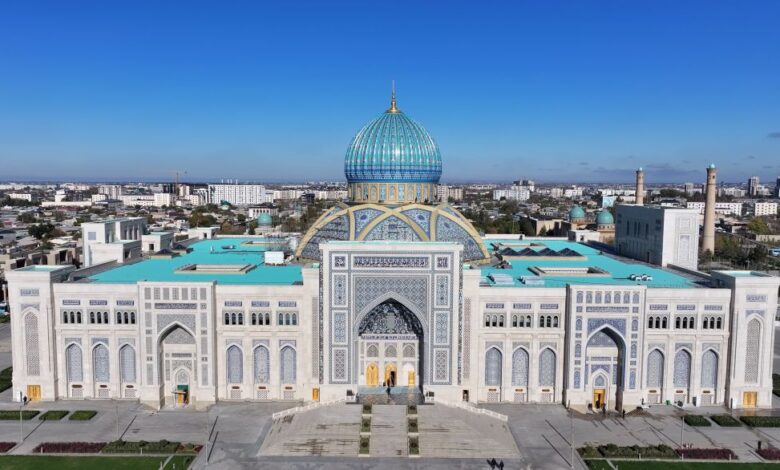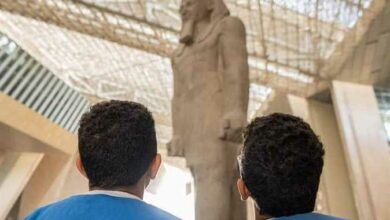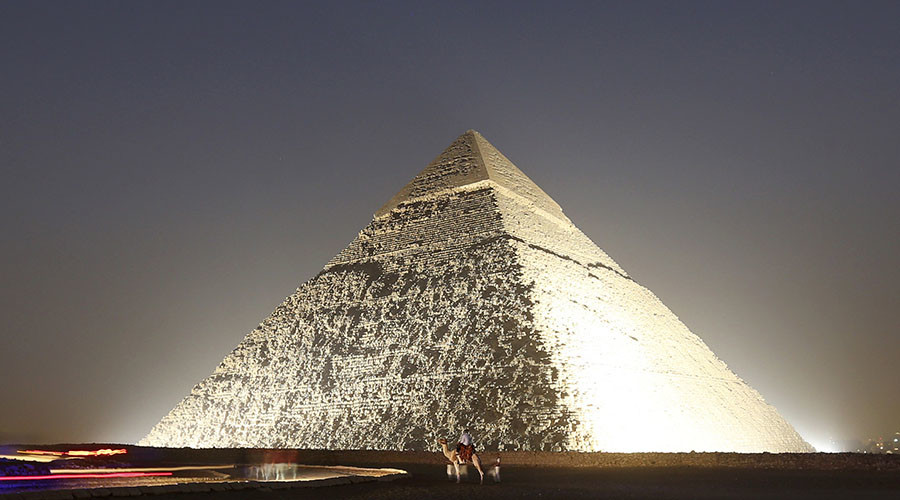
Four times taller than the Hollywood sign and around seven times larger than the White House, Uzbekistan’s newest cultural center is a monument of epic proportions.
Part museum, part academic research facility, the three-story, $150-million Center for Islamic Civilization (CISC) in Tashkent will be open to the public in March 2026, and is intended to celebrate and revive Uzbekistan’s historical role as a center of Islamic scholarship.
“This region has been home to many ancestors who influenced world civilization,” said Firdavs Abdukhalikov, director of CISC. “The big question was how to present their influence to the world, to younger generations, in an engaging and modern way.”
Over the past eight years, while the building was under construction, CISC engaged 1,500 specialists from more than 40 countries to help develop the center’s scientific, architectural and cultural elements.
For example, through an “interactive educational zone” that leverages virtual reality, augmented reality, and artificial intelligence technologies for exhibits such as conversations with “living portraits” of historical scholars and thinkers, the center hopes to inspire children to explore astronomy, medicine, literature and art.
The second floor will be dedicated to research, where international academics can access more than 200,000 books in its library.
“It’s not just a museum — it’s a cultural and educational platform. Here, we don’t only engage with artifacts, but also with the lives and ideas of influential figures,” Abdukhalikov added.
Reviving the past
While Uzbekistan is a secular nation, Islam is a key part of its history and cultural identity.
Arab conquests brought Islam to Central Asia in the 7th century, replacing earlier Zoroastrian and Buddhist traditions, and between the 9th and 12th centuries, the region experienced a golden age of science, literature, and architecture.

Medieval Uzbekistan, and the wider Central Asian region, was “a globalized world before globalization,” said historian Farhan Ahmad Nizami, founding director of the Oxford Center for Islamic Studies at the University of Oxford, who’s not connected to the CISC.
Uzbek cities like Bukhara and Samarkand were important stops on the Silk Road, a cross-continental trade route that stretched from Venice to Xi’an for 1,500 years (130 BCE to 1453 CE), and became a confluence of culture and ideas from both the East and West.
“(Uzbekistan’s) contribution in science and arts is obvious, and now people are rediscovering it, although it had not received sufficient attention,” Nizami added.
Later, in the 15th and 16th centuries, the Timurid Empire would see a second renaissance of art, science, and diplomacy, with Samarkand at its center, an era that the CISC’s architecture draws inspiration from with its grand, mosaic-covered archways, blue tile-covered domes and intricate ornamentation.

In the 19th century, Russian expansion saw many parts of Central Asia incorporated into the Russian Empire, and later the Soviet Union, which imposed secular rule and suppressed Islamic practices.
“A significant portion of our cultural treasures left the country during the Soviet times,” says Abdukhalikov.
It wasn’t until 1991 that Uzbekistan regained independence and began reviving its Islamic heritage and cultural identity. To this end, CISC was given a directive to recover its historic items.
“We have participated in auctions such as Christie’s and Sotheby’s, bringing back parts of our cultural heritage. We have reclaimed 2,000 items and are continuing our work on this,” says Abdukhalikov.

The center’s exhibitions explore Uzbekistan’s history through these objects, including the 7th-century Quran of Uthman, one of the oldest in the world, and a collection of 114 Quranic manuscripts created by renowned rulers and calligraphers across the ages.
‘Tremendous potential’
While Nizami said the center has “tremendous potential,” he cautioned that “the building is a platform; what happens on the platform is entirely different,” stressing that its success depends on long-term research, education and cultural engagement.
There are criticisms of the center, relating to its cost, the sources of its funding, and the limited religious freedom in the country.
CISC declined to comment on the building’s cost or funding sources.
A construction fire in September delayed the center’s original launch, but the main construction work has been completed.
With around 60% of Uzbekistan’s population under the age of 35, Abdukhalikov said that the museum is for the next generation.
“We have to inspire them and tell the story of our great history through innovation and creativity,” he added.




